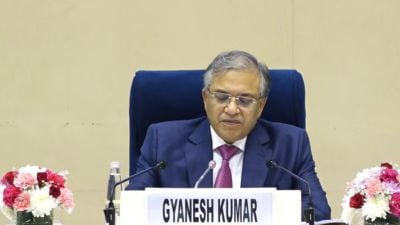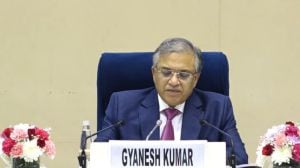Coloniser and the wise Brahmin
Historians may dismiss the construction of the colonial ``other'' as a mere narrative production. They convincingly demonstrate that colo...

Historians may dismiss the construction of the colonial “other” as a mere narrative production. They convincingly demonstrate that colonialism was sustained by the creation of a complex cultural and material interface between the coloniser and the colonised. At least in India British imperialism depended on a range of social groups of which the literate Brahmin pandits and to a lesser extent their Muslim “ashraf” (elite) counterparts emerge as the chief compradors. “Brahminical wisdom” buoyed the British to success just as much as it had guaranteed the survival of their Turkish and Mughal predecessors.
After the British conquest of Bengal (1765) the regular collection of land revenue remained the colonial administrators’ major preoccupation. But this onerous task could be most effectively accomplished if adequate knowledge of the Indian countryside, people and politics was readily available. This administrative concern provided the financial and institutional support to British orientalistadministrators like Warren Hastings, Charles Wilkins and William Jones. These children of European Enlightenment tradition were already enthused with the idea of “knowing” non-European societies for a better understanding of their civilisation. In India their intellectual and administrative trajectories were shaped by their own training and education.
Being Oxonian elites obsessed with classical thought, they naturally turned to Sanskrit as an equivalent classical language holding the key to Indian civilisation. This perspective made them rely heavily on their subcontinental counterparts the Brahmins who knew Sanskrit, and ashraf maulvis and munshis who knew Arabic and Persian. They were indifferent to the language and literature of the subaltern classes.
Thus early British understanding of India was largely based on the scrutiny of classical Sanskrit texts. Between 1773 and 1775 fifty legal treatises were produced for the British, compiled by `pandits’, translated into Persian by Zain-al-Din AliKasai and then into English in 1776 by N. Halhed as the Code of Gentoo Law. It was this quest for “Brahminical knowledge” that resulted also in the establishment of the Bengal Asiatic Society as the main repository of `oriental’ literature.
As British power spread its administrative networks up the Ganges valley, influential English sahibs became the new centres around which took place the reconfiguration of local Brahmins and their literary arsenals. In the increasing absence of local patrons these men of learning flocked to the English sahibs seeking material sustenance to continue their traditional occupation. Often they offered administrative texts to British officials in order to teach them how to go about their business. Particularly revealing was the case of Charles Wilkins, a British civil servant and the first European to master Sanskrit, who camped at Benares to learn Sanskrit.
Encouraged by his willingness to unravel the textual knowledge Wilkins reported that “his habitation is becomingthe resort of the learned men of Kasee [Kashi]”.
Warren Hastings, the first Governor General of India, himself emerged as the patron figure for the pandits of north India. His favourite pandit, Radhakant, was given a grant of land worth Rs 1,200 for his brilliant exposition of history based on the Puranas. The same was true of William Jones, founder of the Asiatic Society of Bengal, who relied heavily on the intellectual labour of a range of pandits and Persian scholars whom he referred to as “my private establishment of readers and writers”.
This Brahminical support had far reaching effects on the evolution of social identities in India. Communities associated with these traditions also began to be rigidly identified linguistically. Thus Sanskrit was seen as the language of the Hindus and Arabic-Persian as that of the Muslims. This meant that the carefully crafted pre-colonial Mughal legacy where a linguistic synthesis cutting across religious identities was encouraged was all set to be torn apart.The British creation of these misplaced identifiers was perhaps the beginning of the problems that ultimately led to the two-nation theory. It continues to be the most critical post-colonial predicament of independent India.
The writer is associate professor of history at Jamia Millia, New Delhi.



- 01
- 02
- 03
- 04
- 05




























